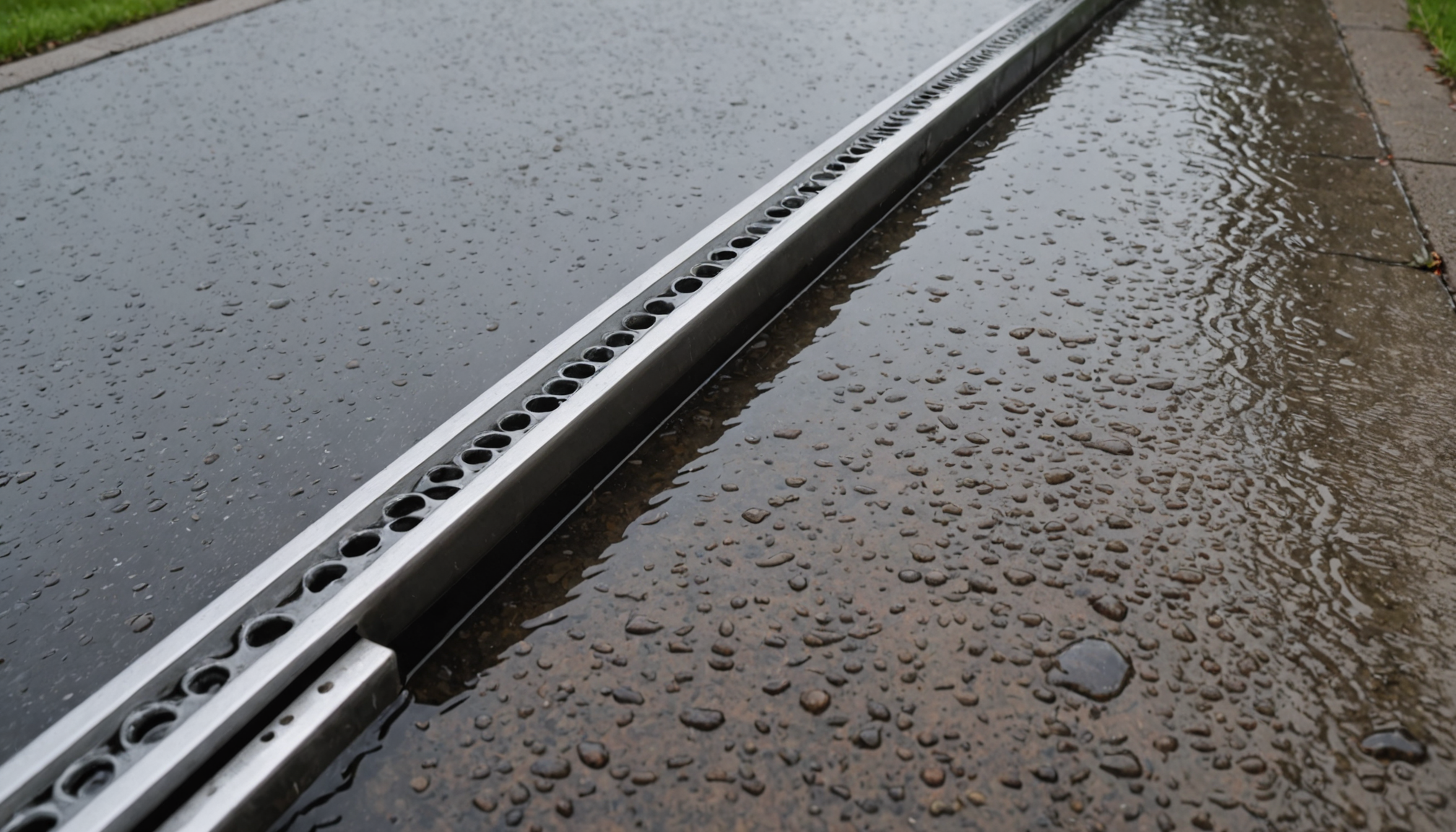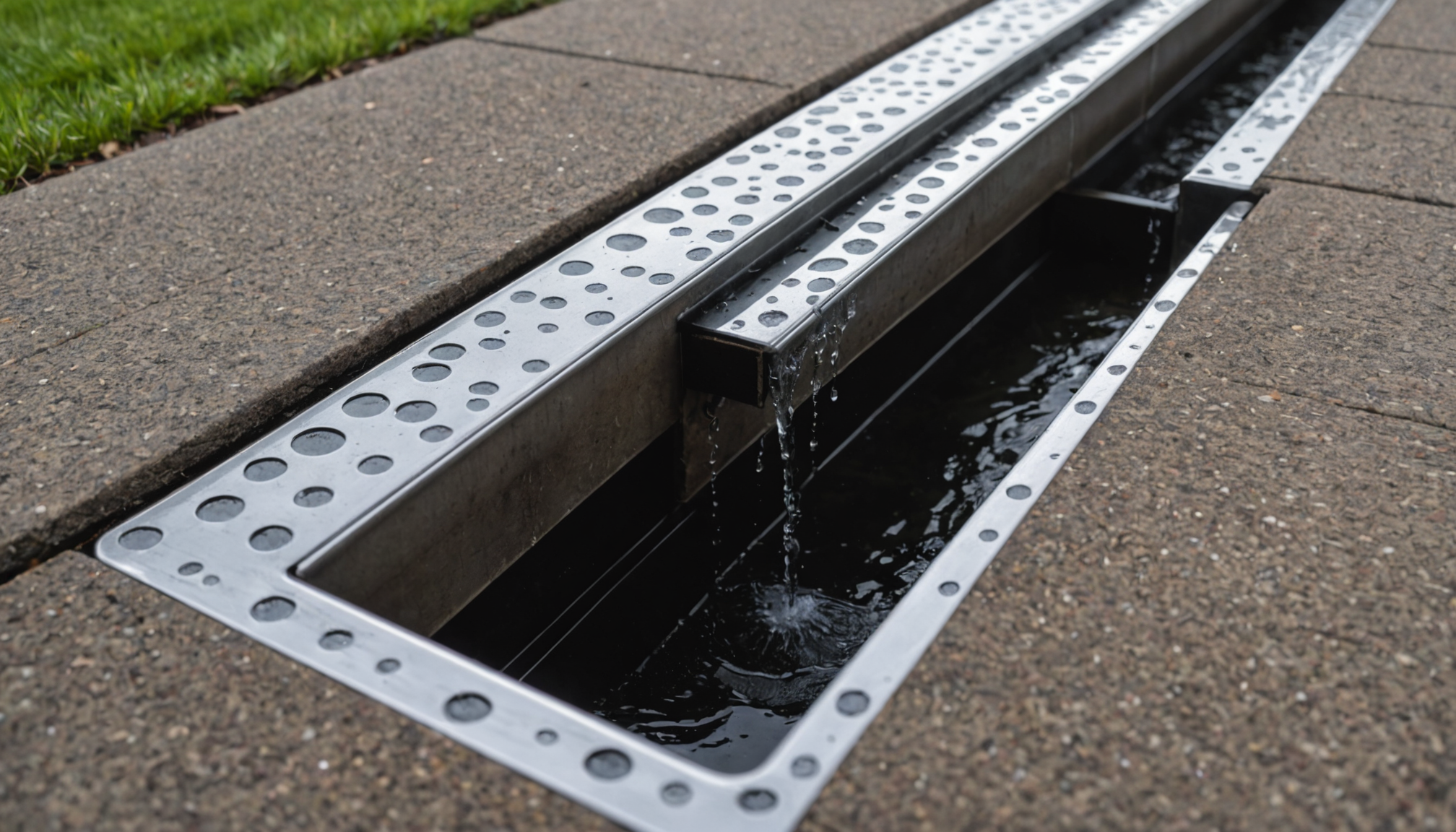 Choosing the right drainage solution for your driveway can greatly affect the longevity and function of your property, particularly in areas like St. Louis where heavy rainfall and snowmelt often lead to water accumulation. Driveway channel drains provide an efficient and practical method for managing excess water, preventing costly damage and enhancing the overall value of your residence.
Choosing the right drainage solution for your driveway can greatly affect the longevity and function of your property, particularly in areas like St. Louis where heavy rainfall and snowmelt often lead to water accumulation. Driveway channel drains provide an efficient and practical method for managing excess water, preventing costly damage and enhancing the overall value of your residence.
Driveway channel drains, or trench drains, are linear drainage systems specifically designed to intercept surface water and direct it safely away from driveways and other paved surfaces. By efficiently managing surface water, these drains help prevent common issues like flooding, erosion, and deterioration of driveway materials. For a city such as St. Louis, which experiences an average annual precipitation of over 41 inches as per the National Weather Service, having a robust drainage system is essential.
One of the primary benefits of installing driveway channel drains is their ability to reduce water damage to both the driveway itself and adjacent structures. Stagnant water can lead to cracking, spalling, and scaling of concrete or asphalt surfaces, which can be costly to repair or replace. By ensuring proper water flow away from these areas, channel drains maintain the integrity of the surface over time.
Additionally, channel drains contribute to safety by minimizing the risk of hydroplaning and slips. Accumulated water can create slippery surfaces which are hazardous for both pedestrians and vehicles. By keeping the driveway dry and free of standing water, channel drains enhance safety, especially during harsh weather conditions.
Beyond practical benefits, there are aesthetic advantages to consider. Modern channel drain systems come in various styles and materials, such as galvanized steel, cast iron, and plastic, which can complement the design of any property without being intrusive. A well-designed drainage system not only functions effectively but also enhances the curb appeal of your home.
Furthermore, from an ecological standpoint, effectively managing stormwater runoff with channel drains helps reduce the environmental impact on municipal stormwater systems. It prevents excessive strain on local infrastructure, thereby supporting community efforts in sustainable water management.
The investment in driveway channel drains is a proactive approach to protect and preserve your property, leading to long-term savings, increased safety, and improved environmental stewardship. For residents in regions like St. Louis, where weather patterns can cause significant water-related challenges, these drainage systems are not just a luxury but a necessity.
Identifying common problem areas
When tackling the issue of effective water management in a region like St. Louis, identifying the most problematic areas on your property is a critical step. Homeowners often encounter specific zones where water tends to pool or flow excessively, causing possible damage and safety concerns. Recognizing these areas ensures that the installation of channel drains will be as effective as possible, providing targeted solutions that manage runoff efficiently.
Low spots in a driveway are common culprits for water accumulation. These areas are often created due to improper grading, settling over time, or simple wear and tear. The collected water can lead to deterioration of driveway surfaces, especially in climates that experience frequent freeze-thaw cycles like St. Louis. Identifying these depressions and ensuring they are adequately addressed during the installation process can prevent significant damage.
Transition areas between different landscaping levels or where a driveway meets a road can also be prone to water accumulation. They often collect runoff from higher elevations or neighboring properties, making them key locations for channel drain placement. Without proper intervention, water can seep into the foundation, compromising structural stability and potentially leading to costly repairs.
Properties with mixed surface types, such as tiles, gravel, or multiple pavements, might experience differential drainage rates, which can exacerbate pooling. It’s essential to assess these interfaces closely, as they can impact how quickly water is absorbed or drained, potentially creating problematic saturated zones.
Furthermore, an overlooked problem area is the intersection point between the driveways and gutters or downspouts. Even when the rest of the drainage system is functioning optimally, mismanaged roof runoff can lead to excessive pooling at these junctures, necessitating strategic placement of channel drains.
- Identify low spots and depressions in your driveway that collect water to target them efficiently with channel drains.
- Check transition areas between elevated landscapes or where the driveway meets the road for drainage issues.
- Assess mixed surface areas for differential drainage rates that might cause extended pooling or runoff issues.
- Ensure that roof runoff from gutters or downspouts does not exacerbate driveway pooling by examining these junctions.
- Collaborate with drainage professionals to tailor solutions specifically to your property’s unique landscape and water flow characteristics.
Installation process for channel drains
When it comes to installing channel drains, it’s essential to be aware of common mistakes to ensure efficient drainage and longevity of the system, especially in areas like St. Louis where weather conditions can exacerbate water-related issues. One frequent error is the improper leveling of the drainage system. Channel drains must be installed with a slight slope, allowing gravity to direct water toward the designated exit point or collection area. Incorrect leveling can lead to water pooling within the channel itself, nullifying its purpose. Always verify the grading during installation to ensure water flows smoothly through the channel.
Another common mistake is selecting the wrong type or size of channel drain for your driveway needs. Inadequate size or strength can result in insufficient capacity to handle heavy rainfall or snowmelt, leading to overflow and potential damage. It’s crucial to assess the volume of water the area typically receives and choose a channel drain that can accommodate these levels. Consulting with a drainage specialist can provide insights into the appropriate specifications for the local climate in St. Louis.
Improper sealing of the joint between the channel drain and the surrounding surfaces can also cause issues. If not sealed correctly, water can seep into these joints, undermining the foundation and potentially causing erosion or even sinkholes in severe cases. Using a high-quality sealant specifically designed for outdoor use and compatible with the materials in your driveway can prevent these problems.
Additionally, failing to account for debris accumulation can lead to drainage blockages over time. Installing channel drains with built-in grates can help catch debris, but it’s also important to establish a regular maintenance schedule to ensure these grates remain unclogged. Regular inspection and cleaning will help maintain optimal function and prevent potential backups during heavy rainfall.
Moreover, overlooking the integration of the channel drain with the overall drainage system of the property is a mistake that can undermine the efficiency of the entire setup. It’s not enough to simply channel water away from the driveway; it must be properly directed into an adequate drainage outlet or soakaway to prevent water from simply relocating the problem to another area. An assessor or drainage professional can evaluate the entire property to ensure comprehensive water management.
Ultimately, careful preparation, informed decision-making, and regular maintenance are key to avoiding these pitfalls, ensuring that your driveway and property are well-protected against water damage in St. Louis and beyond.
Maintenance tips for optimal performance
Regular maintenance is crucial for ensuring that your driveway channel drains perform optimally over time, particularly in a climate like St. Louis, where water challenges are frequent. Start by scheduling routine inspections to check for any visible signs of wear or damage, such as cracks in the drainage system or shifting components, which can occur due to ground movement or seasonal freeze-thaw cycles common to the area.
Focus on keeping the channel drains clear of debris. Leaves, dirt, and other materials can accumulate over time, leading to blockages that hinder water flow. Employ a sturdy brush or a high-pressure hose to clean the grates periodically, and more importantly, remove and clear any debris trapped within the channel to prevent water from backing up onto the driveway.
During the inspection and cleaning process, pay particular attention to the condition of the grates. These protective covers are essential for preventing larger debris from entering and clogging the drainage system. Ensure they are securely attached and free from damage — replacing any that show significant wear or rust, which could compromise their effectiveness.
Maintaining the proper slope and integrity of the channel drains is also essential. Regular checks should confirm that the grading directs water efficiently toward the designated discharge area, ensuring no standing water within the drains. If you notice any spots where water pools, it could indicate a settling of the ground or misalignment of the channel that needs adjustment.
Address any signs of erosion or soil displacement around the drains promptly. Erosion can weaken the area around the drainage system, potentially leading to structural issues. Reinforce eroded sections with appropriate materials like gravel or soil stabilizers to maintain stability and effective water management.
Additionally, consider the impact of seasonal changes and prepare accordingly. In colder months, use de-icing agents that are safe for use around your drainage system and driveway materials to prevent ice from building up and blocking the water flow. However, avoid harsh chemicals that can degrade the materials of both your driveway and drainage system over time.
Finally, keep an eye out for any water accumulation issues that could be indicative of a larger drainage problem. Collaborate with a local drainage professional if persistent issues emerge, as they can offer insights and solutions tailored to the unique characteristics of St. Louis weather patterns and your property’s landscape.
By staying vigilant and proactive in your maintenance efforts, you can ensure that your driveway channel drains continue to perform effectively, protecting your property from water damage and extending the lifespan of your drainage system. Maintain a regular schedule, address issues promptly, and your investment will serve you well, keeping your driveway safe and dry, no matter what the weather brings.
Choosing the right material for your driveway drains
- Why are driveway channel drains necessary for homes in St. Louis?
- Given the high annual precipitation and frequent freeze-thaw cycles in St. Louis, driveway channel drains are crucial for managing stormwater and minimizing water damage. They prevent water accumulation on driveways, reducing the risk of cracks and erosion that are common in these conditions.
- How do I choose the right channel drain material for my driveway?
- Select a material that complements your driveway and is durable enough to withstand your local weather conditions. Options like galvanized steel, cast iron, or reinforced plastic are popular due to their resilience against St. Louis’s variable climate and ability to handle significant surface water flow.
- Can I install channel drains by myself, or should I hire a professional?
- While some skilled DIY enthusiasts might be able to install channel drains, it is often best to hire a professional. They can ensure proper grading, integration with existing drainage systems, and selection of suitable materials for the specific water management needs of St. Louis properties.
- How often should I maintain my driveway channel drains?
- Regular maintenance, including inspections every few months and cleaning as needed, will ensure optimal performance. In St. Louis, scheduling maintenance before and after winter can help address debris from seasonal changes and prevent freeze-related issues.
- What common mistakes should I avoid when dealing with channel drains?
- Avoid improper leveling during installation, as it can hinder water flow and lead to inefficiency. Additionally, ensure that you choose the correct size and strength to handle your local precipitation levels, and regularly clean out debris to prevent clogs.
